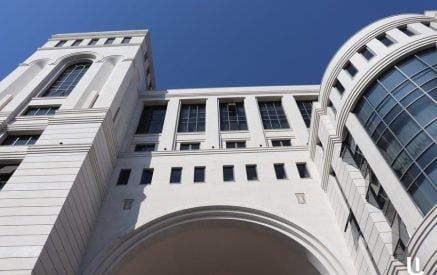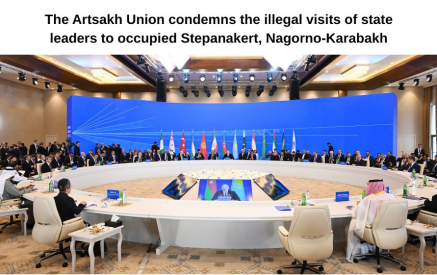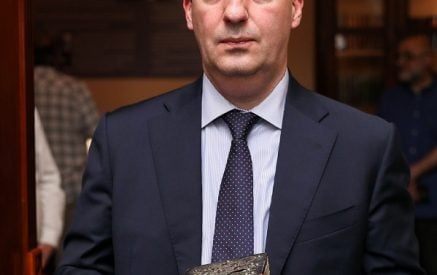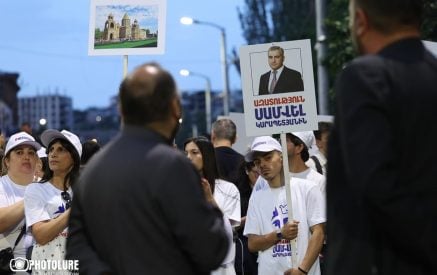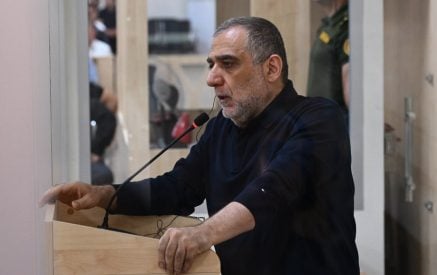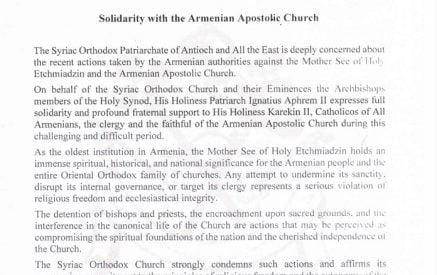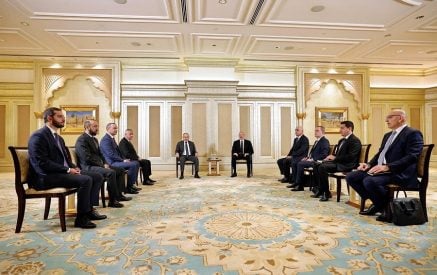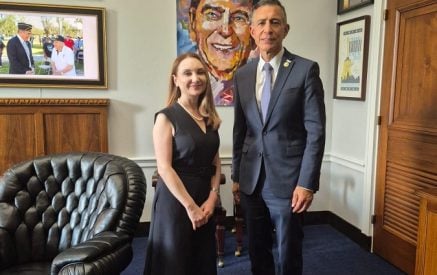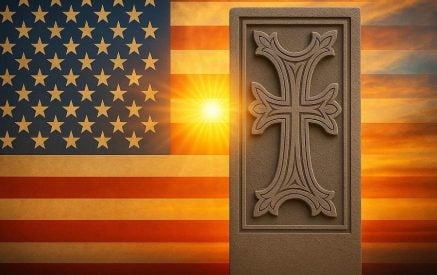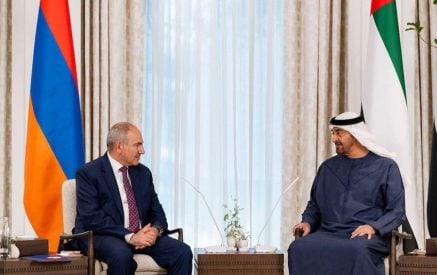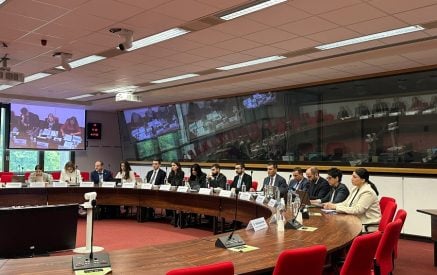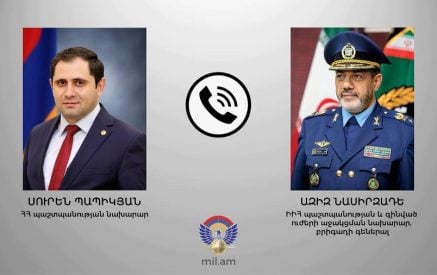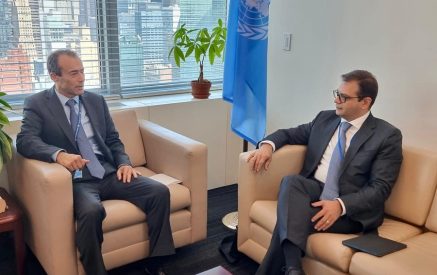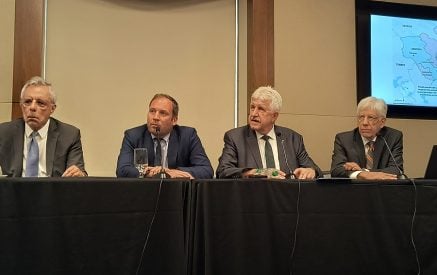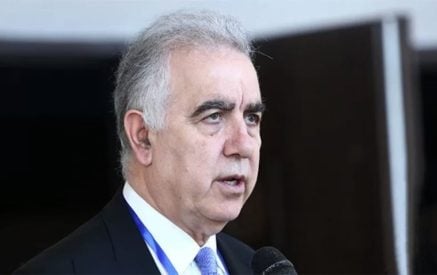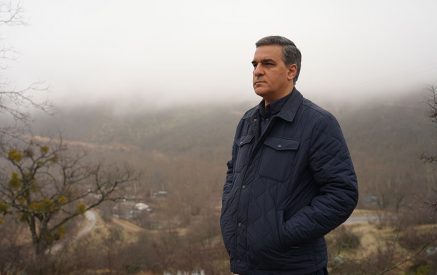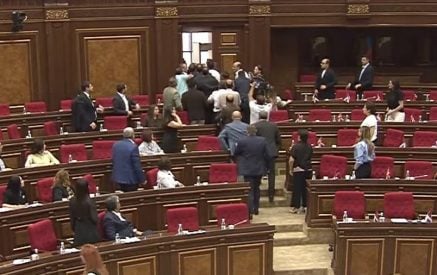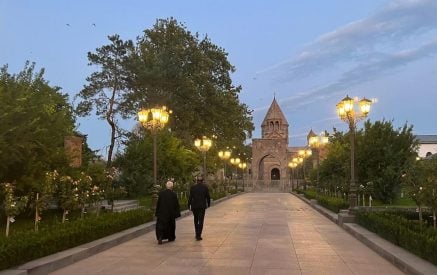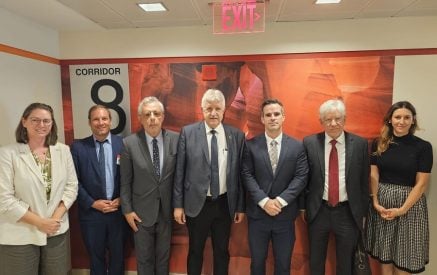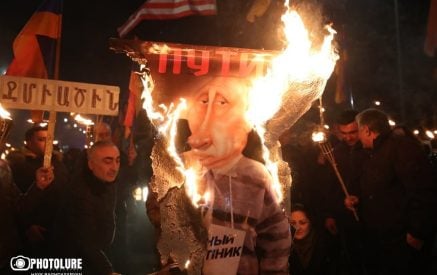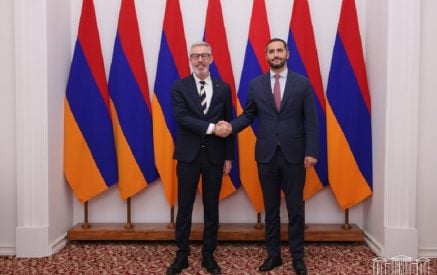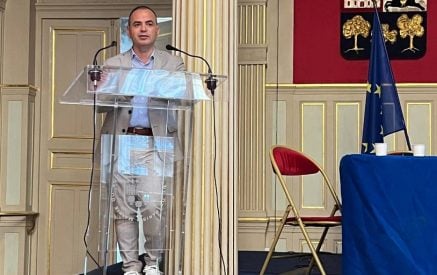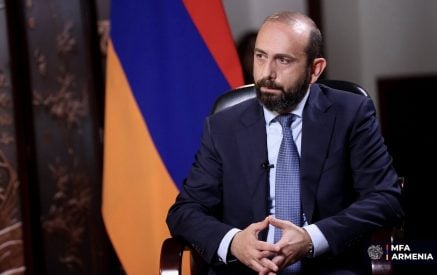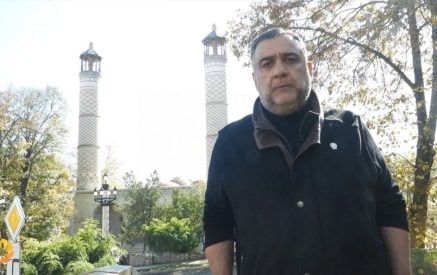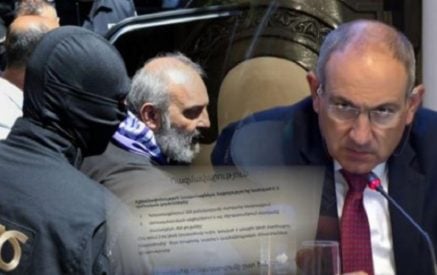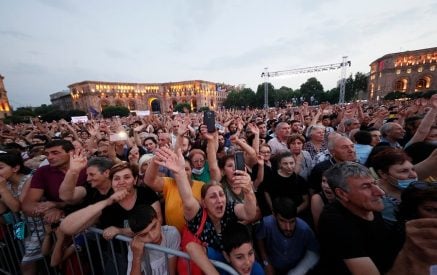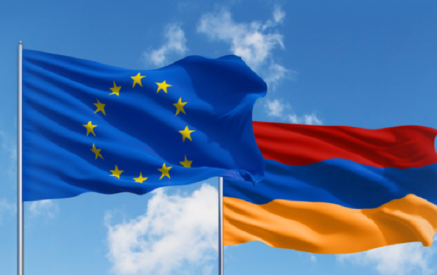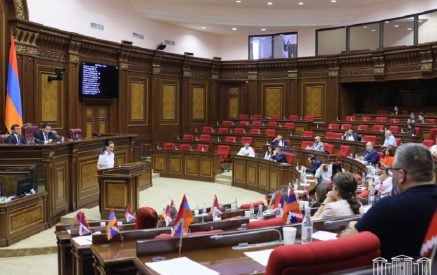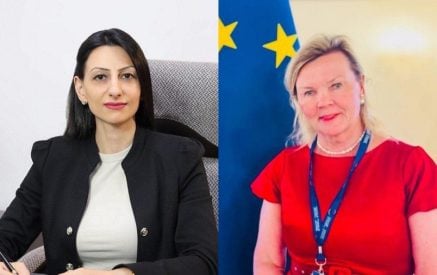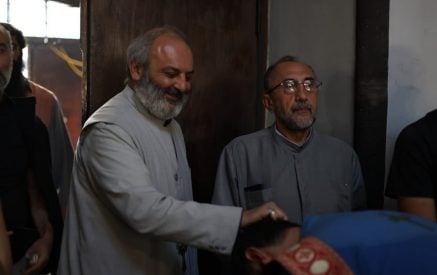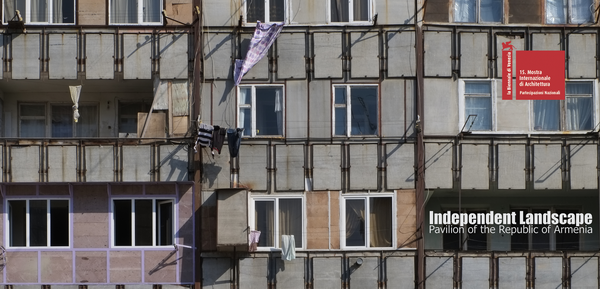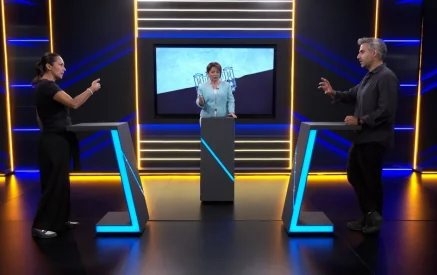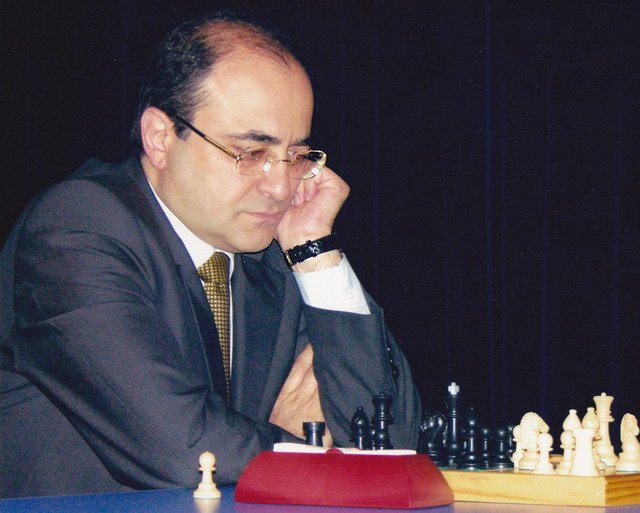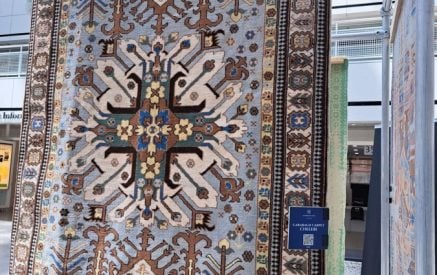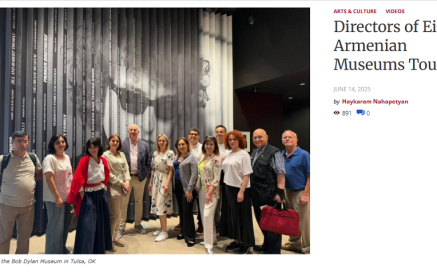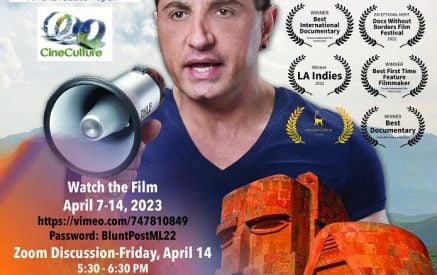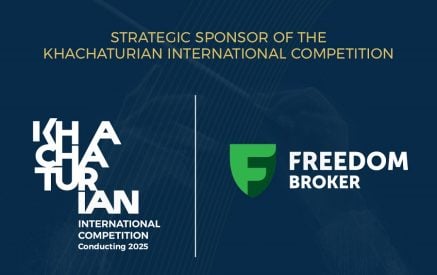Sarhat Petrosyan, an urban designer and architect, highlights the importance of Armenia joining International Architecture Biennale in Venice. He sees the Biennale not as an exhibition but rather a generator for articulating architectural ideas that define the trends in the sphere for the upcoming 5-10 years.
Armenia presented Independent Landscape pavilion at the 15th International Architecture Exhibition of La Biennale di Venezia. Sarhat Petrosyan, the curator of the Armenian pavilion, says the Armenian approach to the event has considerably changed over the past two biennales.
“This year we celebrate the 25th anniversary of Armenian independence and we have sought to revisit the progress we have made and avoid reiterating the messages we have occasionally voiced.
It has been our intention to pave a new way for progress in our discourse on architecture”, the curator says adding that the similarities the Armenian pavilion shares with the Spanish one, the recipient of the Golden Lion award winner, speak of Armenia’s right approach. This year the Armenian pavilion was located in the heart of Venice, the Mechitarist Order , on the island of San Lazzaro, in the court of Holy Cross Armenian Church. The church was closed to public for many years and it was on the occasion of the Armenian pavilion that it opened for six months.
Read also
Independent Landscape: 5 Research Groups
During the Biennale five research groups from Armenia gave their interpretation of different layers of the Armenian landscape through the following stories: “People’s square”, “Visiting Post-earthquake Gyumri”, “Shrinking Cemeteries”, “Rethink Metsamor”, “Expanded Housing”.
“It was in 1990, when Armenia was on the verge of independence, that Levon Abrahamian, an ethnographer, published an article titled “Ritual, Pre-theatre and the Theatre Square”, with attending photo illustrations by Zaven Khachikyan. Today, a quarter of a century later, they can retell the story of the Freedom Square.
The next story helps us address the issues in disaster zone. The issue has been in the spotlight, yet we have somehow neglected our own share of professional guilt in it.
Vahan Ishkhanyan, an investigative journalist, seeks to address the shortfalls that led us to having a disaster zone thirty years after the earthquake, when we have uninhabited residential buildings and blocks.
Students of TUMO Center of Creative Technologies in Gyumri have also joined this research group. It was part of their academic project to contribute to the story, by mapping and presenting post-earthquake Gyumri. The project participants are Gyumri residents who have already developed their own disposition towards the city. We have targeted the children living in those blocks. TUMO provided them each with a camera to capture shots of their own environment. In this way, they made their own contribution to the story.
The next story explores the phenomenon of Armenian cemeteries. It has not been our goal to explore the cemeteries, but to follow their historical progress from medieval times to the 21st century. Virtually, the contemporary cemetery, aside from the few still-remaining parts in the old tradition (which tend to disappear quickly) is the most extravagant component of the Armenian urban landscape. A component that lacks any conceptual solution.
Expanded housing has always been one of my favourite topics. We have always regarded this issue with humour but it will be better if we delve into the reasons that underlie it.
The research group has sought to identify the peculiarities of these expansions, as well as to understand the social-psychological roots of these endless urban transformations, which still pose a challenge to the local authorities reflecting the clash between the “official” purist and planned approach and the reality of expanded housing developments of the urban environment. Once we start evaluating the cases of expanded housing, we might indentify the reasons behind them and be able to provide proper solutions.
And the final story is that of my foster project, Metsamor City. Metsamor is a company town of nuclear power plant which for me is the crystallized phenomenon of Armenia’s recent history – from late Soviet and early independent Armenia. In 2007, I had a chance to be part of the team developing new master plan for the town when I discovered this ashy crystal.
It is through these five stories that we have tried to unveil the issues of the past 25 years to generate a discussion. Interestingly enough, the theme had been chosen long before the biennale. As for the name of the Armenian pavilion, it relates both to the Armenian independence and the European landscape discourse. Generally all the discussions by UNESCO and the Heritage Preservation of the European Council progress from the perspective of landscape and not material heritage.”, -Sarhat Petrosyan says.
Non-architectural, Still Worthwhile
Speaking of instances of urban construction and architectural attempts to transform the environment, the urban designer states: “Most of our problems are due to insufficient theoretical analysis and cognition. Once you make a decision to map something or to change a kerbstone, you have to support it theoretically. Architectural decisions sometimes lack this kind of support. This is where we should place the emphasis, for instance, in the case of shrinking cemeteries or the Opera Square.” The designer also refers to the instances of the positive development made in the city, namely Aznavour Square, some areas in Abovyan street, such as Le Café de Paris. He praises the combination of green and efforts of individual intervention that made Cascade, Lovers’ Park, and streets like Parpetsi and Saryan the best spots for evening promenades.
The architect claims that unplanned non-architectural effects also take place. “They are much more valuable than the architectural ones, still they seem challenging to our community of architects, business people and city authorities.”
Another Biennale: the Golden Lion
The Armenian pavilion won the Golden Lion in 2015 at the 56th biennale with its project “Armenity” that generated great public interest. Sarhat Petrosyan says the Armenian pavilion owes this success to its international team, the members of which include renowned international curator Adelina von Fürstenberg (née Cüberyan) and artists coming from different places in Europe, Asia and the USA, united not only by their nationality but also by the fact that they are all descendants to Armenian Genocide survivors. This year was also symbolic because of the 100th commemoration of the Armenian Genocide.
Creative Industries are to Win
Sarhat expects culture and architecture to boost the economy in the country. “The spectrum of creative industries is quite wide ranging from photography to the production of souvenirs and fashion design. As an intellectual country, Armenia enjoys great opportunities for development, as is best evidenced by its progress in Information technologies. Nobody can ban you from selling your creative products and I can note substantial progress in the fields of design and photography, which is due to the fact that none of the fields has inherited the established Soviet system that would prevent the entry of young people. Fortunately, Armenian oligarchy is not into these two fields either and cannot control them.”
The urban designer believes that it is viable to provide effective urban architectural solutions in cases where there are insufficient funds; one just needs proper community management. “Guerilla gardening is very much in practice today, when young people garden on lands they are not empowered to utilize. It takes place in Armenia as well. By the way, Armenia is the only country in the world, where graffiti art is supported and financed by the government, whereas the whole world associates it with vandalism. Love for the environment is a pre-requisite for a successful delivery of any project. Armenia creates opportunities for great ideas to be realized by reaching wider society”.
Sarhat Petrosyan believes that once your country gets properly featured at reputable international events, foreign cultures learn more about your country’s culture and architecture as well as its current development trends. One can also find out about other effective ideas and ways of having them localised.
Sarhat thinks architecture in Armenia needs to be demonopolised, a process which will create new investment opportunities and will pave new avenues for the young. One also needs to work hard to be issued grants. Take, for instance, the recent case when Getty Foundation donated a conservation grant to the Writers’ Resort in Sevan. The guesthouse was designed by architects Gevorg Kochar and Michael Mazmanyan in 1932 and features abstract forms inherent in Soviet modernism. The grant issued by Getty Foundation will support the reconstruction of this unique site. Sarhat Petrosyan is the head of the project’s architectural design and Ruben Arevshatyan, the chairperson of National Association of Art Critics of Armenia, heads the restoration project.
Gohar Hakobyan
Photos are the courtesy of www.independentlandscape.am




